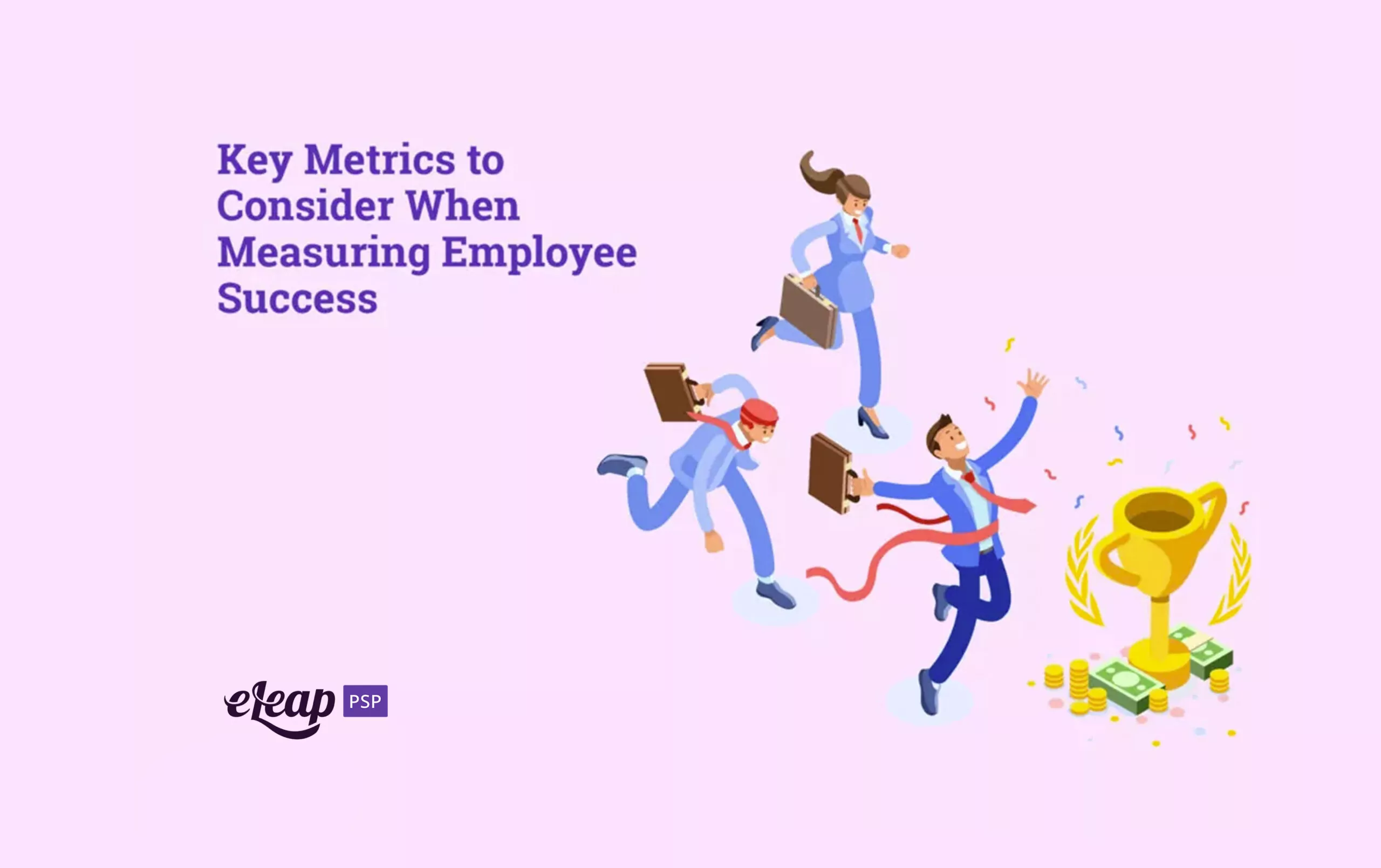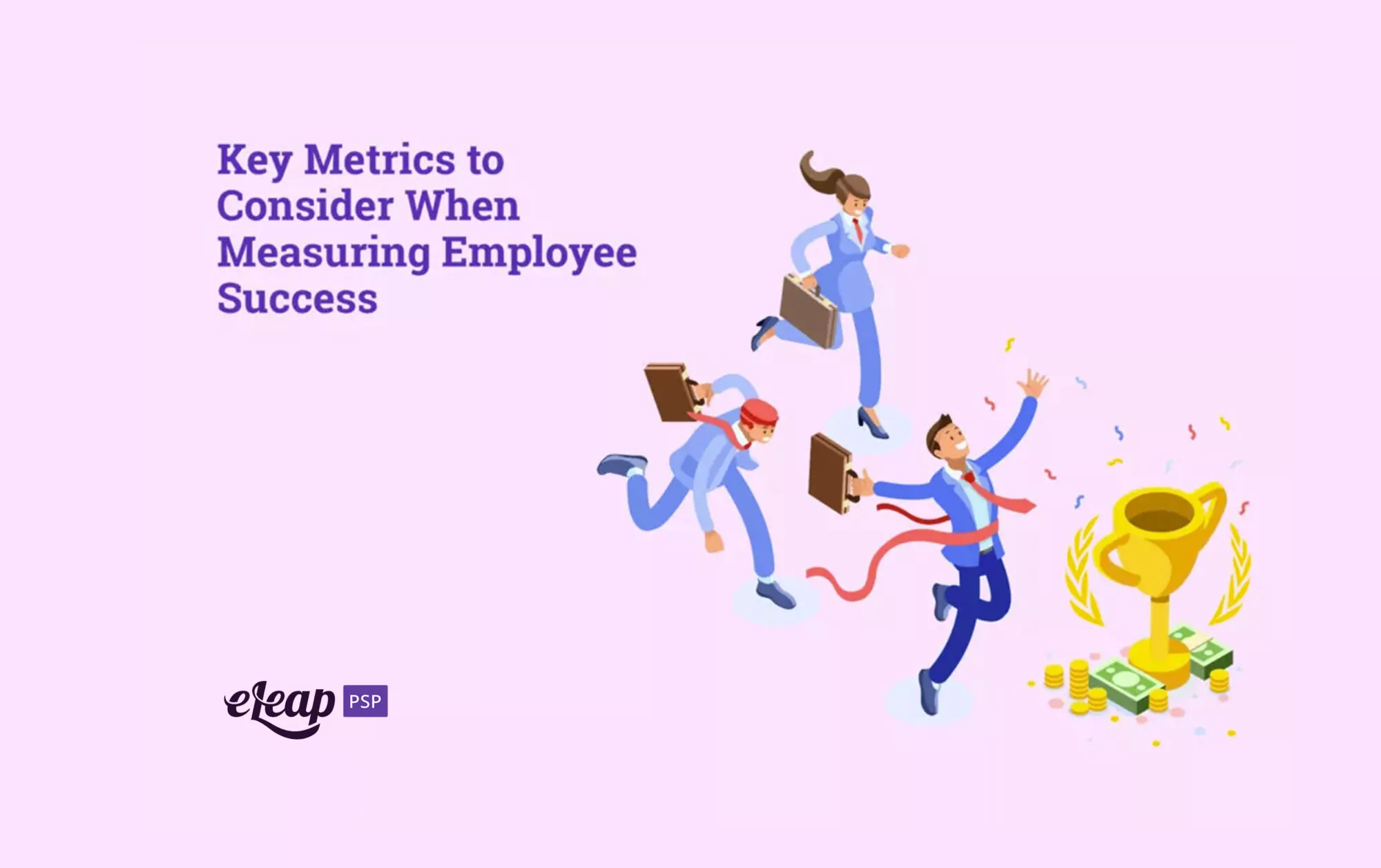Key Metrics to Consider When Measuring Employee Success

Performance management has changed a lot over the years. It has gone from a largely punitive process that focuses on criticizing employee performance during annual reviews to one that focuses on using ongoing conversation and coaching to support performance. And, because your company is only as good as the talent that supports it, you must focus on measuring employee success so you can help your team reach its full potential.
How do you know when they’ve reached it, though? How do you gauge their level of performance? What defines “enough” in terms of coaching?
It all comes down to using the right metrics. With specific touchstones, you can assess whether an employee is performing not to your expectations but to their potential. Of course, you’ll need to know what those metrics are so you can work them into your performance management plan. We’ll explore them in this post.

Did They Achieve the Goal?
One metric to use when measuring employee success is whether or not the employee met his or her specific goal. This should be tied to the team, as well. However, remember that it is possible for an employee to meet their goal but for the team as a whole to miss the mark, so always judge based on individual performance, not team performance.
Quality of Work
Work quality is imperative. It even trumps efficiency. After all, an employee can be very efficient, but if they are completing inferior-quality work, then there’s little being gained. It could be argued that they are not as efficient as they seem on paper since low-quality work may need to be redone to a higher standard. Of course, quality needs to relate to the type of work the employee performs.
Effectiveness
How effective is the employee in their role? Are they able to solve challenges while on the job? Are the problems they’re solving critical to their role and the company?
Remember that effectiveness is more than just the sum of an employee’s completed tasks. You need to be able to measure the creativity of their solutions to problems and challenges. An employee who solves five problems while thinking outside the box is arguably more effective than an employee who accomplishes 10 tasks that require nothing more than pressing a button.
Initiative
Does the employee take initiative? Is your employee motivated to do more than the bare minimum asked of them? If not, why not? Is it a shortcoming on their part? Is it something to do with the workplace? Is it the culture, the environment, or the team? Initiative is important for a number of reasons. First, it shows a sense of ownership in the organization. Second, it sets the tone for the rest of the team, showing them that others are willing to go above and beyond.
Attendance
Attendance might not seem like a particularly important metric, as even the least valuable employee can still punch the clock every day. However, we need to move beyond that cynical viewpoint and realize that if someone consistently shows up to work day in and day out, then they are at least committed to working. It is not a stretch to assume that they are committed to the company or organization, as well.
Time and attendance tracking should be automated so that you can track patterns in employee behavior – consistently being late, consistently leaving early, and repeated absences, all point to problems. However, that does not mean that these need to be grounds for dismissal. Instead, they could be clues that help you identify individuals in need of help, whether that’s with personal or professional issues.
Training and Career Advancement
Learning and development are part and parcel of employment for most organizations today. Even if your team members don’t need CE for compliance reasons, it’s important to provide training on situations they might encounter on the job. You should certainly be tracking employee performance in training and career advancement activities, but you may be drawing the wrong conclusions in some instances.
For example, if an employee consistently scores poorly on assessments or takes an undue amount of time to complete modules, your first assumption might be that they are not engaged or that they’re simply not trying very hard. However, it could be that you’re measuring employee success while engaging them in the wrong type of environment. They might be a hands-on learner or someone who learns better through gamification. In this case, suspect your learning management system first and your employee second.
Goals and Objectives
Goals and objectives tie into effectiveness and quality, but they go deeper, which is why they are addressed separately. Does the employee have clearly-stated goals that align with their position and with their talents? Do the employee’s objectives relate directly to organizational objectives? Is it clear to the employee how their efforts support the success of the organization?
Often, if there is a lack of clarity here, then employee performance will suffer as a result. Employees with unclear goals and objectives might feel useless, or they might feel like they are “spinning their wheels” doing something that ultimately has little value. Clearly tie goals and objectives into not just employee performance but results for the organization and why they matter. Show the employee why what they’re doing matters. Make them feel integral to the company’s success.
In Conclusion
These are just some of the metrics you should use when measuring employee success. There are others, such as the number of critical objectives met, secondary tasks completed, and the number of goals unattained. Time management, innovation, and productivity – also tie into the situation.
However, you must review employee performance not just in the light of what they are bringing (or failing to bring) to the organization but in what you are doing to support your employees in their position. What kind of culture have you created? Do they have the tools, training, and knowledge to succeed? Have you clearly communicated goals and objectives? It’s a two-way street, and understanding that will go a long way toward ensuring success.